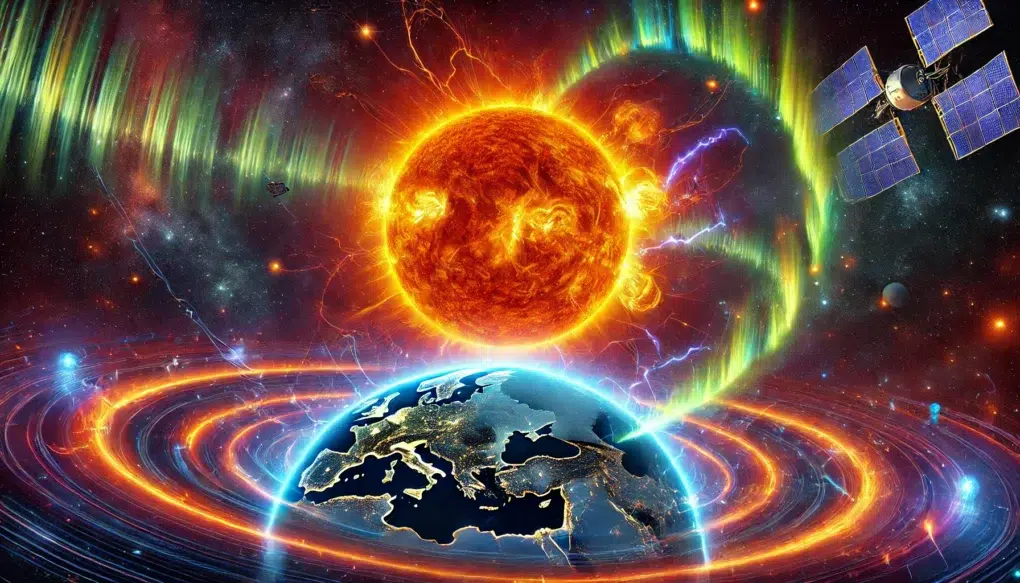Imagine a quiet winter evening under a starry sky. Suddenly, you see colors dancing across the horizon—green, red, and purple. This is the Northern Lights, one of nature’s most spectacular light phenomena. But how do these magical lights come to life?
The journey begins at the sun, where immense forces give rise to phenomena like sunspots, solar flares, and coronal mass ejections (CMEs). These explosive events can release massive amounts of energy and charged particles into space—and sometimes directly toward Earth. When this happens, we may be lucky enough to experience the fascinating Northern Lights.
On this page, we will follow the journey of these particles from the sun to Earth and understand how they create the Northern Lights. Finally, we’ll take a look at whether any coronal mass ejections are headed our way, so you can know when there’s a chance to witness this magical light show.
What are Coronal Mass Ejections (CMEs), and how do they affect Earth?
It all begins on the Sun, a massive glowing ball of gas and energy. Coronal Mass Ejections (CMEs) are powerful explosions from the Sun’s outer atmosphere, the corona. During these eruptions, huge amounts of plasma—a mix of electrically charged particles—and magnetic fields are hurled into space. The particles can travel at speeds ranging from 250 to over 2000 kilometers per second! If they are directed toward Earth, they can collide with our magnetic field and atmosphere, creating the stunning Northern Lights.
The journey through space
When a coronal mass ejection occurs, a spectacular journey begins, spanning millions of kilometers. The charged particles are launched in all directions, and if Earth lies along this path, an exciting interaction begins. As they travel through space, the particles can take anywhere from a few hours to several days to reach us.
As the particles approach Earth, they encounter our planet’s magnetic field—an invisible shield that protects the planet from harmful radiation. Most of the particles are diverted by this field and sent back into space, but some are captured. These particles are guided along the magnetic field lines toward Earth’s polar regions.
The encounter with earth and how the northern lights are created
When particles from a coronal mass ejection strike the atmosphere at Earth’s poles, a process begins that results in the magical light we call the Northern Lights (or Aurora). In the atmosphere, the particles collide with gases like oxygen and nitrogen. This collision releases energy in the form of light.
- Oxygen gives us the characteristic green and red light.
- Nitrogen contributes purple and blue shades.
The stronger the coronal mass ejection, the more intense and vivid the Northern Lights can become. This natural phenomenon is a direct connection between the Sun and Earth—a reminder of how we are affected by our closest star.
Is there a coronal mass ejection heading toward the earth right now?
To know if we can expect the Northern Lights, we must closely monitor the Sun’s activity. On this page, you’ll find an updated overview of the most recently observed coronal mass ejections directed toward Earth. These eruptions not only give us a warning about the Northern Lights, but also help us understand how the Sun affects our technological environment, such as satellites and power grids. Want to know if there’s a chance to see the Northern Lights soon? Then you’ll need to keep an eye on this:




